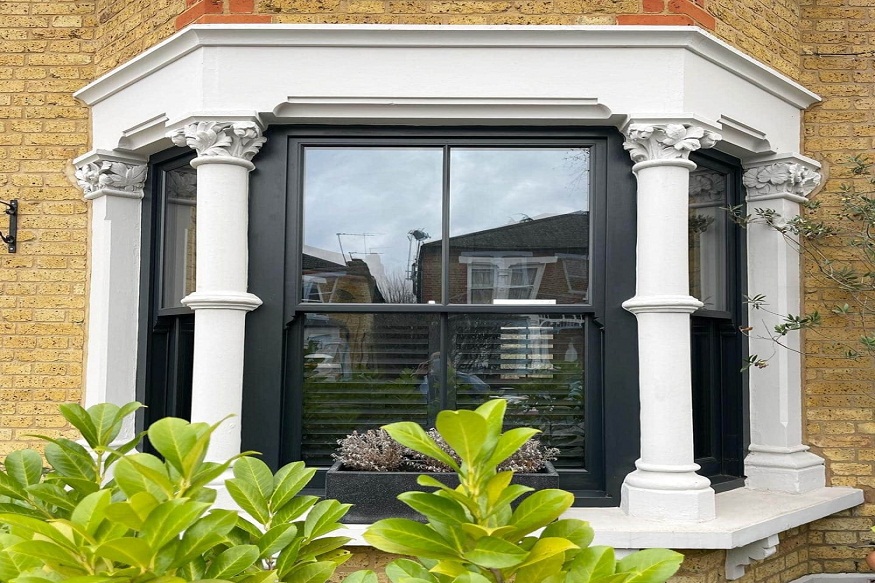Box sash windows have been a staple of British architecture for centuries, offering both elegance and practicality. Traditionally made from timber, these windows are a defining feature of many Georgian, Victorian, and Edwardian homes. However, modern advancements have introduced uPVC alternatives that provide a more cost-effective and low-maintenance option. Choosing between timber and uPVC box sash windows depends on factors such as aesthetics, durability, insulation, and overall value.
Aesthetic Appeal and Authenticity
One of the most significant differences between timber and uPVC box sash windows is their appearance. Timber windows exude a classic charm that is difficult to replicate with synthetic materials. The natural grain of wood provides a warmth and depth that suits period properties, making timber the preferred choice for homeowners looking to maintain historical authenticity.
uPVC, on the other hand, has come a long way in replicating the traditional aesthetic of timber sash windows. Advances in manufacturing have enabled uPVC windows to feature woodgrain finishes, decorative details, and even deep-profiled frames that closely mimic real wood. However, upon closer inspection, uPVC often lacks the intricate craftsmanship and character that timber provides.
For listed buildings and homes in conservation areas, timber windows are often a requirement due to planning restrictions. Many local authorities insist on the use of traditional materials to preserve the historical integrity of a property. In contrast, uPVC is generally more suited to modern builds or properties that do not fall under strict heritage regulations.
Durability and Maintenance
Durability is an important factor when comparing timber and uPVC box sash windows. High-quality timber windows, especially those made from hardwoods such as oak or Accoya, can last for decades if properly maintained. Modern timber treatments, such as micro-porous paints and wood preservatives, help protect against moisture, rot, and insect damage.
Despite these advancements, timber windows still require regular upkeep. Painting or staining is necessary every few years to maintain their appearance and ensure longevity. If neglected, timber windows can deteriorate, leading to costly repairs or replacements.
uPVC box sash windows, by contrast, are virtually maintenance-free. They do not require painting or staining and are highly resistant to weathering, rot, and pests. A simple wipe-down with soapy water is sufficient to keep them looking clean. This makes uPVC a more practical option for homeowners who prefer a low-maintenance solution.
However, while uPVC is durable, it has a shorter lifespan compared to high-quality timber. Over time, exposure to UV light and extreme temperatures can cause uPVC frames to discolour and become brittle. Unlike timber, which can be repaired and restored, damaged uPVC windows usually need to be replaced entirely.
Energy Efficiency and Insulation
Energy efficiency is a key consideration for homeowners looking to reduce heating costs and improve comfort. Timber box sash windows naturally provide excellent insulation due to the density of wood. When combined with modern glazing options, such as double or triple glazing, timber sash windows can offer impressive thermal performance.
uPVC windows also provide good insulation, particularly when fitted with high-quality double glazing. Many modern uPVC windows are designed with multi-chambered frames that trap air and enhance energy efficiency. Additionally, uPVC windows often come with built-in draught-proofing, further reducing heat loss.
Both timber and uPVC windows can be equipped with energy-efficient glazing and draught-proofing systems, making them suitable for keeping homes warm during colder months. However, timber’s natural insulating properties often give it a slight edge in terms of overall performance.
Environmental Impact and Sustainability
Sustainability is an increasingly important factor when choosing building materials, and timber generally has a better environmental profile than uPVC. Responsibly sourced timber from sustainable forests is a renewable resource with a lower carbon footprint compared to synthetic materials.
Many timber manufacturers now use FSC-certified wood, ensuring that forests are managed responsibly. Additionally, timber windows can be repaired and repainted multiple times, extending their lifespan and reducing waste.
uPVC, on the other hand, is a plastic-based material derived from fossil fuels. While some uPVC windows can be recycled, the process is less straightforward than timber’s natural biodegradability. The production of uPVC involves chemical processes that contribute to environmental pollution, making it a less eco-friendly option overall.
For homeowners prioritising sustainability, timber is the clear winner. However, for those seeking a practical, long-lasting, and affordable solution, uPVC still holds merit.
Cost and Value for Money
Cost is often a deciding factor when choosing between timber and uPVC box sash windows. Timber windows tend to be more expensive due to the cost of materials and craftsmanship involved. Custom-made timber sash windows can be particularly costly, especially when using premium hardwoods or bespoke designs.
uPVC windows are significantly more affordable, making them a popular choice for budget-conscious homeowners. Mass production and the use of synthetic materials keep costs down, allowing for a more cost-effective alternative to timber.
While timber windows have a higher upfront cost, they can add significant value to a property, particularly in period homes where authenticity matters. Many buyers are willing to pay a premium for a home with original or well-crafted timber sash windows, whereas uPVC replacements can sometimes detract from a property’s charm.
Security and Functionality
Security is a crucial consideration for any window installation. Modern timber and uPVC sash windows both offer excellent security features, including multi-point locking systems, reinforced glazing, and internal beading to prevent glass removal from the outside.
uPVC windows often come with additional built-in security features, such as steel reinforcements and anti-jemmy bars, making them highly resistant to break-ins. Timber windows can also be fitted with robust locks and security measures, though they may require additional reinforcements to match the strength of uPVC.
Functionality-wise, both timber and uPVC sash windows can incorporate modern enhancements such as spring balances, tilt-and-slide mechanisms, and easy-clean options. These features improve usability and make maintenance more straightforward, regardless of the material chosen.
Which is the Better Choice?
The choice between timber and uPVC box sash windows depends on individual priorities. Timber windows excel in aesthetics, sustainability, and long-term value, making them ideal for period properties and homeowners who appreciate classic craftsmanship. However, they require ongoing maintenance and come at a higher initial cost.
uPVC sash windows, on the other hand, offer a more affordable, low-maintenance solution with good insulation and security. While they lack the authenticity of timber, they are a practical choice for modern homes or properties where budget and ease of maintenance are primary concerns.
Ultimately, both materials have their advantages and drawbacks. Those looking for an authentic, high-end finish may prefer timber, while homeowners seeking an affordable and hassle-free option may find uPVC to be the better fit. Understanding the pros and cons of each helps homeowners make an informed decision that aligns with their needs and property style.

